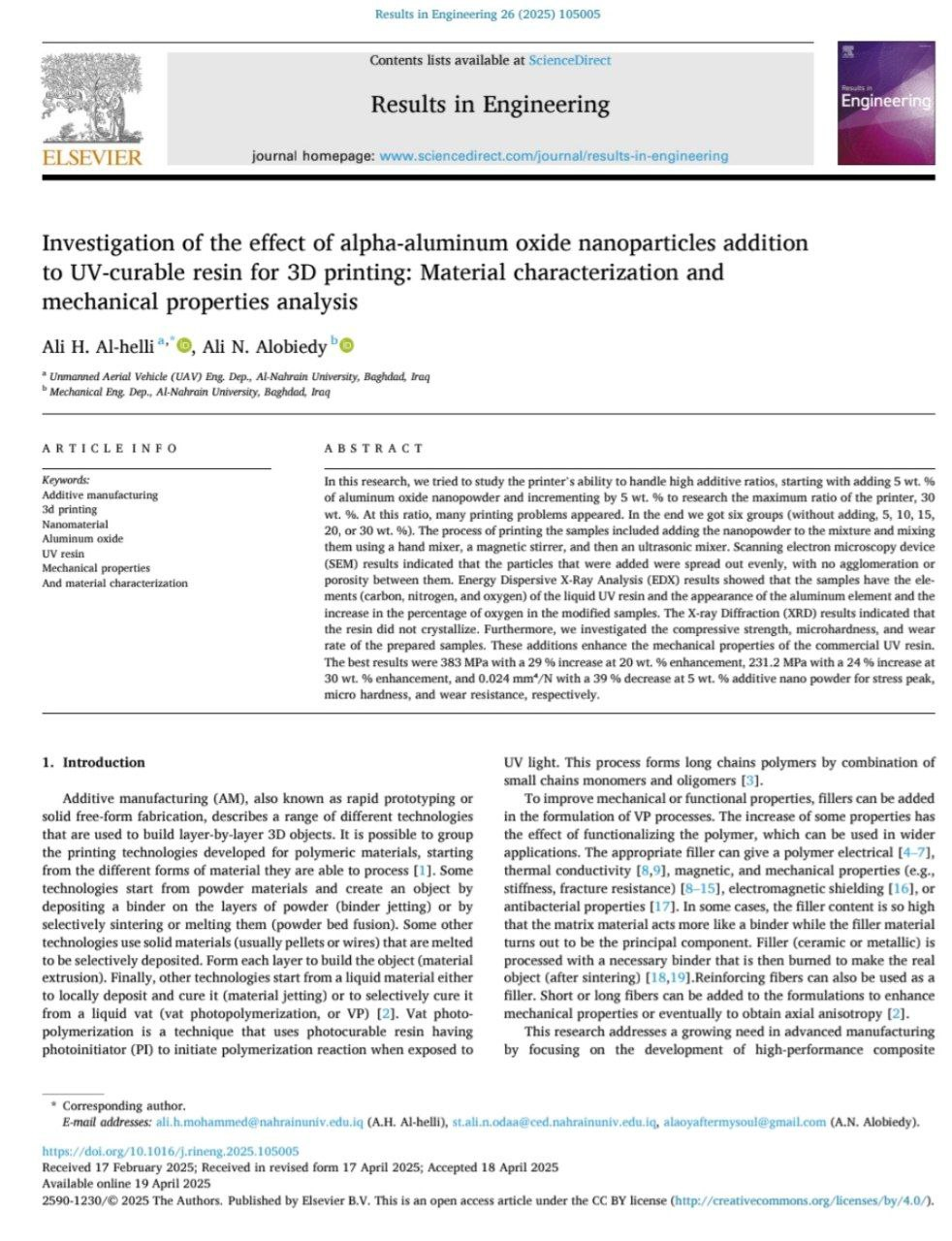Visitors: 28557358 Views
Done By: Unmanned Aerial Vehicle
Post Date: 2025-05-03
Last Browse: 2025-09-14

Professor Dr. Ali Hussein Mohammed, Head
of the Department
of Unmanned Aerial Vehicle Engineering at the
College of Engineering at Al-Nahrain University, published a scientific
research paper entitled: Investigation of the Effect of Alpha Aluminum
Oxide Nanoparticle Addition of UV Curable Resin for 3D Printing: Material
Characterization and Mechanical Properties Analysis The research was published in the journal Results in Engineering, published
by Science Direct, and included in the first quarter of Scopus and ClaraFit In
this research, we tried to study the printer's ability to handle high additive
ratios, starting with adding 5 wt. % of aluminum oxide nanopowder and
incrementing by 5 wt. % to research the maximum ratio of the printer, 30 wt. %.
At this ratio, many printing problems appeared. In the end we got six groups
(without adding, 5, 10, 15, 20, or 30 wt. %). The process of printing the
samples included adding the nanopowder to the mixture and mixing them using a
hand mixer, a magnetic stirrer, and then an ultrasonic mixer. Scanning electron
microscopy device (SEM) results indicated that the particles that were added
were spread out evenly, with no agglomeration or porosity between them. Energy
Dispersive X-Ray Analysis (EDX) results showed that the samples have the
elements (carbon, nitrogen, and oxygen) of the liquid UV resin and the
appearance of the aluminum element and the increase in the percentage of oxygen
in the modified samples. The X-ray Diffraction (XRD) results indicated that the
resin did not crystallize. Furthermore, we investigated the compressive
strength, microhardness, and wear rate of the prepared samples. These additions
enhance the mechanical properties of the commercial UV resin. The best results
were 383 MPa with a 29 % increase at 20 wt. % enhancement, 231.2 MPa with a 24
% increase at 30 wt. % enhancement, and 0.024 mm⁴/N with a 39 % decrease at 5
wt. % additive nano powder for stress peak, micro hardness, and wear
resistance, respectively. . Search link:
: https://doi.org/10.37934/arfmts.127.2.193202 Link to the lecturer’s CV: https://cv.nahrainuniv.edu.iq/ar/view/791